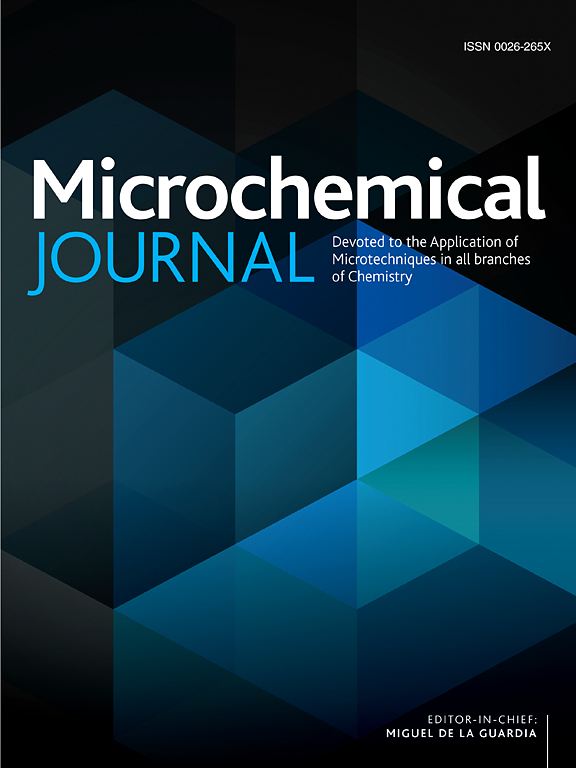Oxidant-assisted preparation of carbon dots pairs for construction of a dual-channel fluorescence sensor array for tetracyclines discrimination
IF 4.9
2区 化学
Q1 CHEMISTRY, ANALYTICAL
引用次数: 0
Abstract
The improper or excessive use of tetracyclines (TCs) can lead to residues in the environment and food, posing a global environmental concern. It is imperative to explore simple and economical methods for detecting and discriminating multiple TCs simultaneously. In this work, oxidant-doping carbon dots (OCDs) and reference carbon dots without oxidant-doping (RCDs) were synthesized in the presence and absence of ammonium persulphate (APS), resulting in distinct compositions of functional groups. TCs can quench the fluorescence of the two CDs to different extents, thus a two-channel fluorescence sensor array for five kinds of TCs was constructed. The discrepancies in fluorescence response of the two CDs towards various TCs were maximized through regulating the spiked concentration of APS. Under optimal sensing conditions, each of the five TCs produced unique fluorescence response patterns, allowing for differentiation within concentration ranges of 0.5 ∼ 50 μg mL−1 based on linear discriminant analysis. Discrimination of binary, ternary and quaternary mixtures of TCs was achieved through the sensor array. The sensor array was successfully applied to tap water, lake water, and milk samples, yielding satisfactory recovery rates ranging from 85.1 % to 114.4 %. Additionally, molecular docking was initially employed to investigate the interaction modes and strengths between different TCs and the CDs. Overall, this study provides a viable detection platform for multiple TCs, demonstrating significant potential for environmental monitoring and food quality control.

求助全文
约1分钟内获得全文
求助全文
来源期刊

Microchemical Journal
化学-分析化学
CiteScore
8.70
自引率
8.30%
发文量
1131
审稿时长
1.9 months
期刊介绍:
The Microchemical Journal is a peer reviewed journal devoted to all aspects and phases of analytical chemistry and chemical analysis. The Microchemical Journal publishes articles which are at the forefront of modern analytical chemistry and cover innovations in the techniques to the finest possible limits. This includes fundamental aspects, instrumentation, new developments, innovative and novel methods and applications including environmental and clinical field.
Traditional classical analytical methods such as spectrophotometry and titrimetry as well as established instrumentation methods such as flame and graphite furnace atomic absorption spectrometry, gas chromatography, and modified glassy or carbon electrode electrochemical methods will be considered, provided they show significant improvements and novelty compared to the established methods.
 求助内容:
求助内容: 应助结果提醒方式:
应助结果提醒方式:


